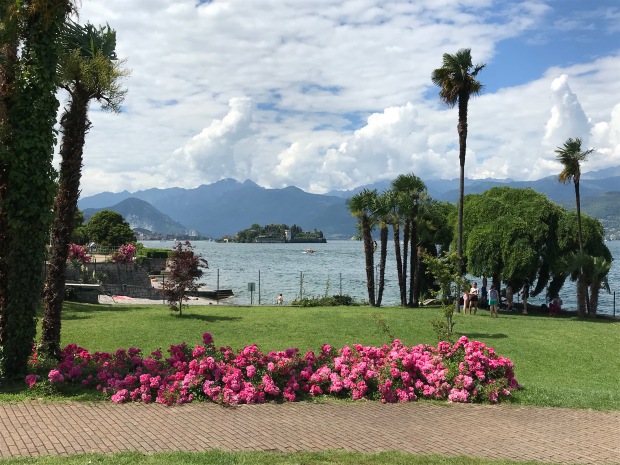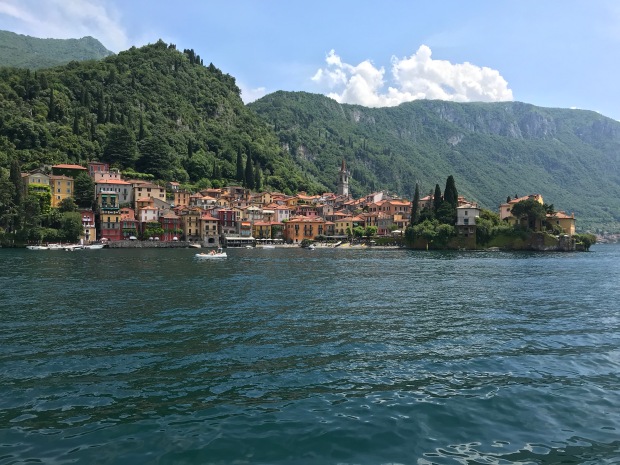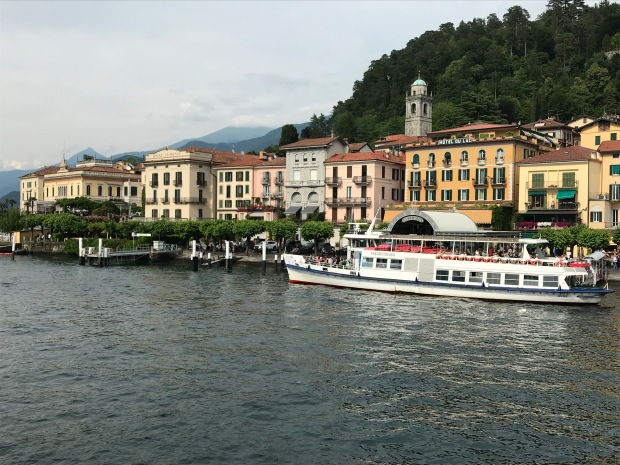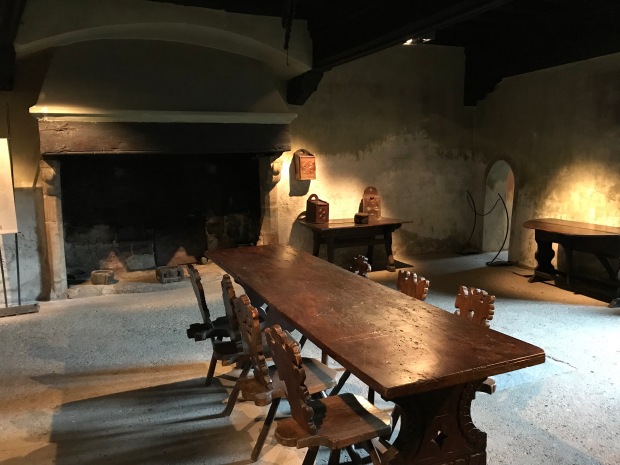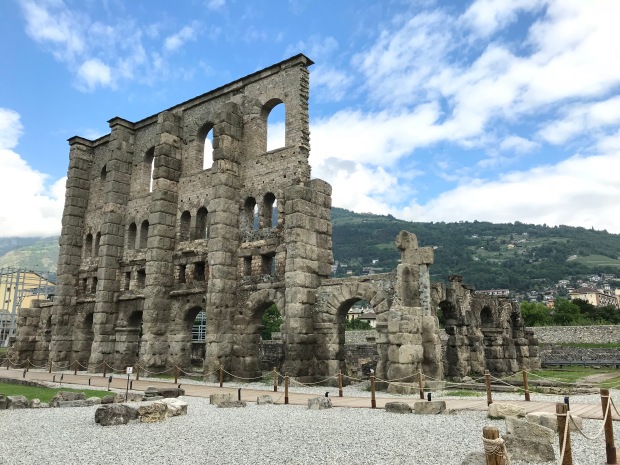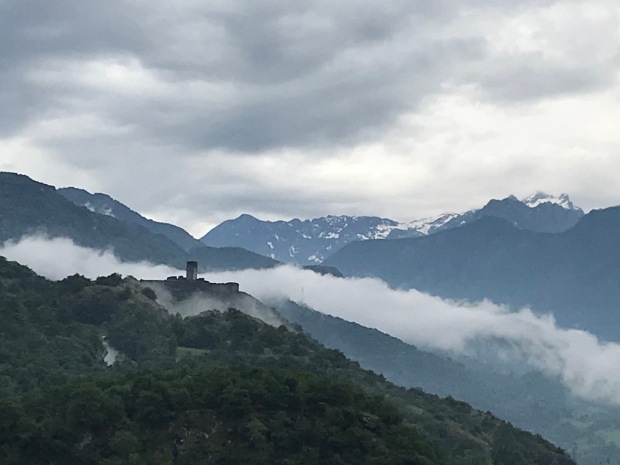There is so much to see in Milan, one post cannot cover it all. This post covers three churches that really are worth a visit (in addition to the Milan Cathedral), along with a couple other spots we enjoyed, shown at the end of the post.
Santa Maria delle Grazie – The Last Supper
This is a 15th century convent, and home of Leonardo da Vinci’s Last Supper (known in Italian as Cenacolo), one of his most famous works of art and unfortunately one that has not stood up well to the test of time, due to the experimental technique Leonardo used – painting on dry plaster rather than wet. The fresco started deteriorating almost immediately. Also, the church was bombed in World War II but amazingly the wall with this painting survived intact – thank goodness.

Exterior of Santa Maria delle Grazie, home of the Last Supper.

The Last Supper (1495-1498) painting covers an entire end of the convent’s refectory (dining) room. Leonardo’s use of perspective gives the painting depth, almost like the scene is a continuation of the refectory. Some bright person decided to cut a doorway into the lower part of the painting back in 1652.

A closer view of the Last Supper – Jesus’ apostles asking “is it I?” when he announces one of them will betray him.

At the other end of the refectory is another painting, entitled the Crucifixion by Giovanni Donato, 1495. It does not receive near the attention of the Last Supper, but is another amazing work of art.
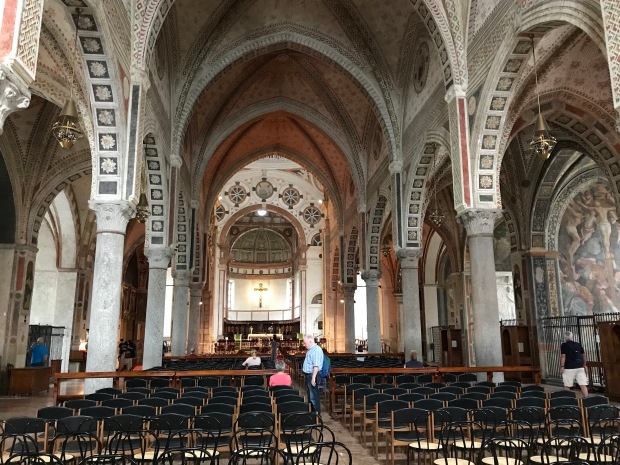
Main chapel of the Santa Maria delle Grazie Convent (which does not require any reservation or fee).

It’s worth spending a few minutes wandering around the main chapel of the Santa Maria delle Grazie Convent, there are many other beautiful works of art here.
Note: You must have a reservation to see the Last Supper; we booked our tickets in March for a May trip. Reservations can only be made 60 days in advance, and a limited number of people are allowed to see the painting at one time (groups of 25 or so). The small group was great, because it did not feel crowded in the room, but you are only allowed 15 minutes in the refectory and then ushered out. The site to secure your tickets/reservations is here. The Convent is west of the Milan’s center, we took a metro train to the nearest stop and walked about 15 minutes to the Convent.

This statue of Leonardo da Vinci is just north of Milan’s main piazza and Galleria Vittorio Emanuele. He was an artist, inventor, scientist, and so much more.
Sant’ Ambrogio (St. Ambrose)
This church is named after a 4th century bishop of Milan. I loved this old Church, which is a bit off the main tourist route. It’s ancient (the current 11th century structure is built on top of the original 4th century church), and houses a priceless 9th century altar decorated with gold, silver and precious stones.

Entrance to the 11th century Basilica Sant’ Ambrogio. There are Roman and Byzantine artifacts scattered around the covered porticos.

The 9th century altar in the Basilica Sant’ Ambrogio, decorated with gold, silver, gems and pearls. In World War II, it was transported to the Vatican for safekeeping.

Near the amazing altar, a 4th century marble sarcophagus sits underneath the pulpit in the Basilica Sant’ Ambrogio.
San Maurizio al Monastero Maggiore
This monastery, which no longer serves as a church, is now a free art museum. The interior is stunning, and it would take weeks to absorb all the artwork.

Main chapel of San Maurizio al Monastero Maggiore.
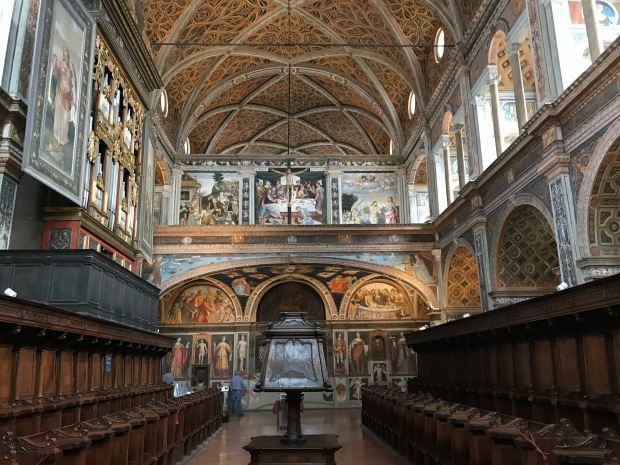
Hall of the Nuns, San Maurizio al Monastero Maggiore

Close up of a painting of the story of Noah’s Ark, in the Hall of the Nuns, San Maurizio al Monastero Maggiore.
Sforza Castle
With everything else we were doing in our short time in Milan, we did not take the time to visit the interior of this castle which is now a museum. It is massive, and impressive from the exterior.The castle is just two metro stops northwest of the main piazza.

Exterior of Sforza Castle, with a dry moat.

Interior courtyard of Sforza Castle.
Milan’s Canals
If you really want to get off the beaten track, check out Milan’s canals. I didn’t even know that Milan had canals, but we discovered these in our exploration of Milan. No tourists out here, and we found a great little shop with a variety of Arancini (or Arancina) that we had to sample!

A canal in Milan. The canals are south of the central piazza about a mile or perhaps 1.5 miles. We enjoyed the walk through the less touristy part of Milan.

A shop with a tasty variety of arancini, they are breaded, deep-fried rice balls filled with a variety of items – meat, sauce, ham, cheese, etc. This fun food is originally from Sicily.


















